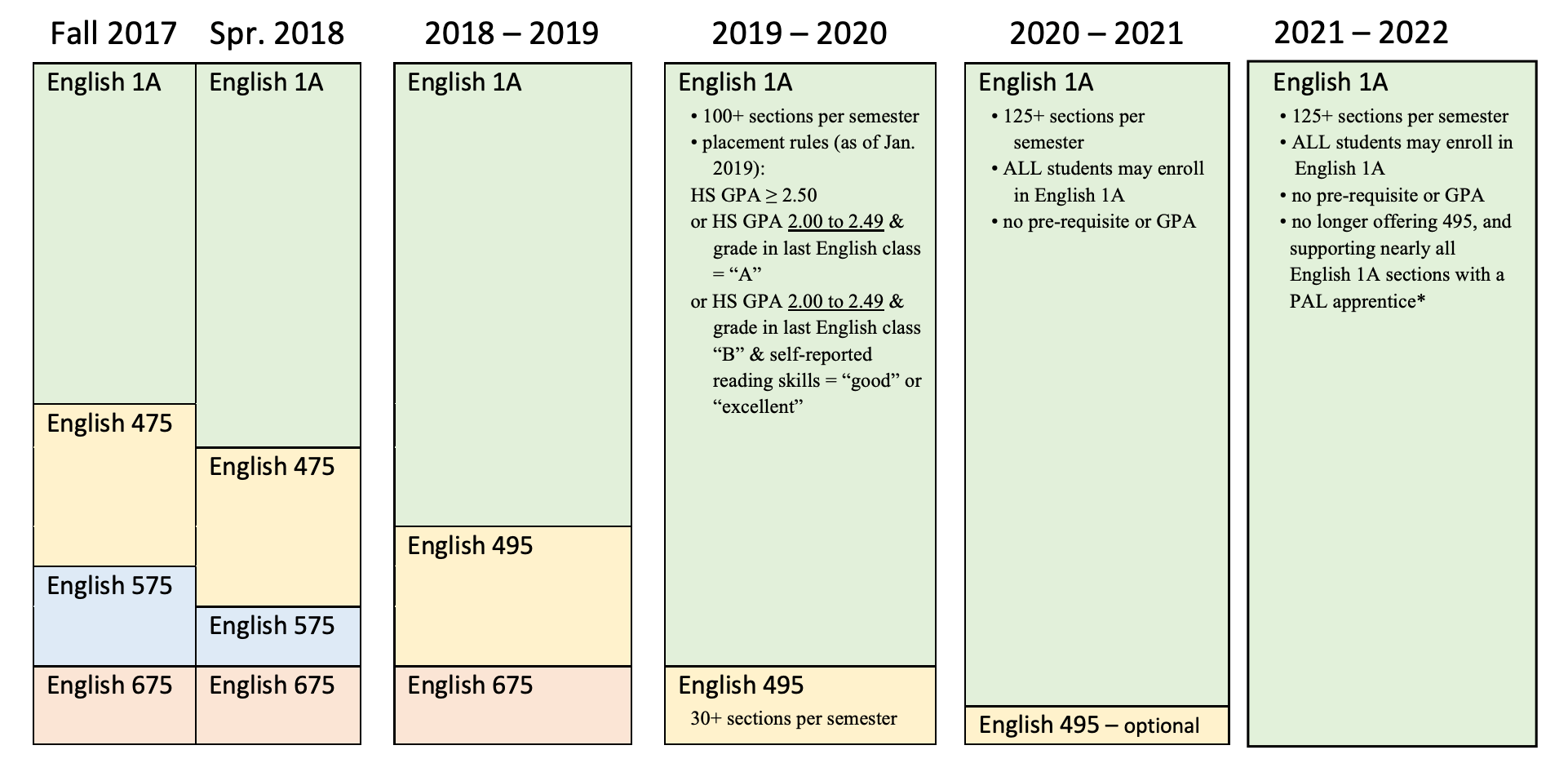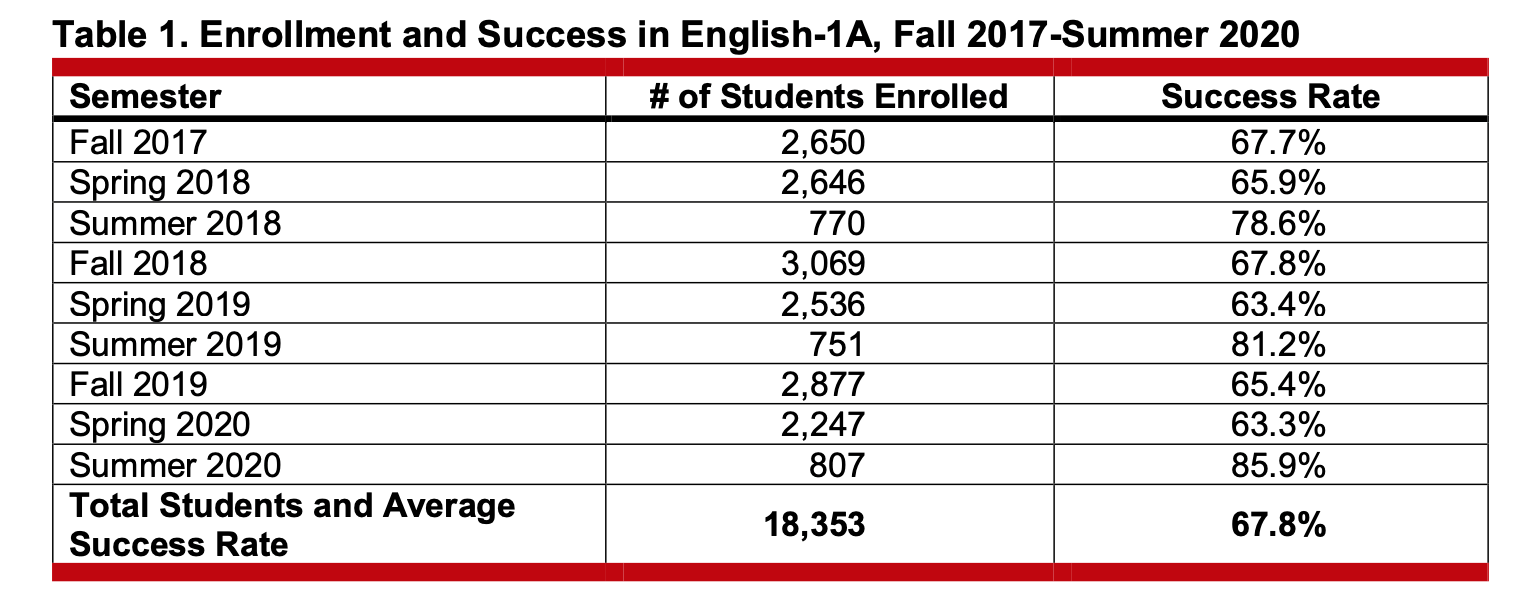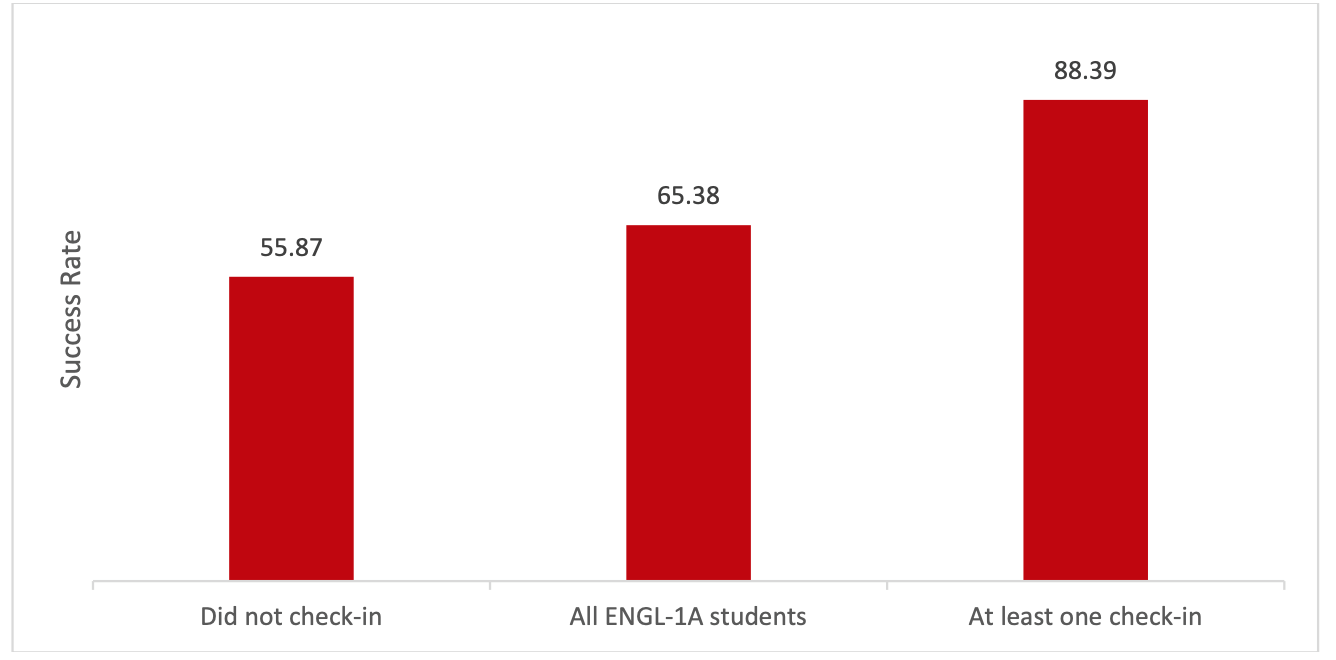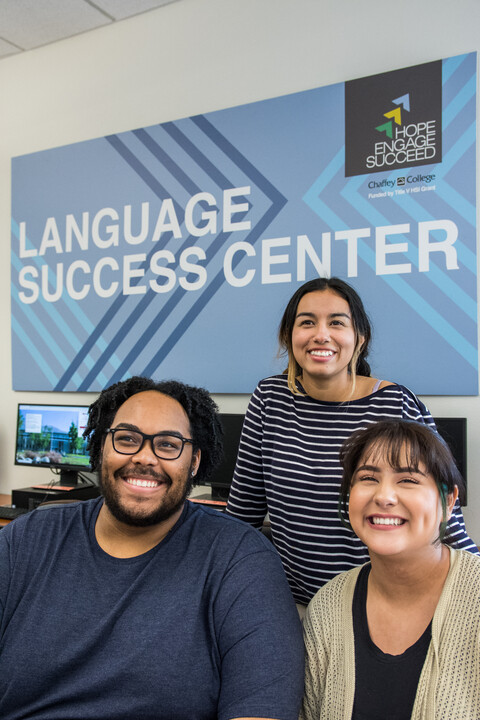Curricular Innovation and PAL Program
In 2018, the English Department at Chaffey College was awarded a $1 million dollar "Innovation Award" for its swift adaptation and adoption of policies in response to Assembly Bill 705, a law requiring that community colleges maximize the likelihood that students complete transfer-level English and math in their first year. The award has allowed the English Department to continue its innovative approach to student success, and as a result of their efforts, a student is 80 percent more likely to complete their English transfer requirement in their first year as a Chaffey College student.
Timeline
The department knew in 2017 when the law was passed that changes would need to be made in order to best serve our students. Over time, the department made a series of curricular and placement changes, at every step, gauging the impact on student access and success:

What began as a four-course sequence, which required a placement test that the department discovered to be unreliable, has been gradually revised in response to careful analysis of student behaviors and success. In its final step to achieving 100 percent compliance with AB 705, the English department will no longer offer English 495 after Spring 2021. The student success rates for English 495 demonstrated that the course was not significantly increasing success rates and has actually prevented students from succeeding in English 1A, the transfer level course. Therefore, as of Summer 2021 and beyond, all students will enroll directly in English 1A.
The chart below demonstrates the progress the department has made in placing students directly into transfer-level coursework (English 1A) through the spring of 2020. As of Summer 2021, the process will be complete, and 100 percent of students will enroll directly in English 1A:

Because of the success of the PAL Program, the department feels confident in making this change that ensures all English students will enroll in transfer-level coursework.
Student Success
Monitoring student success has been at the heart of this project, and as the following chart demonstrates, success rates in English 1A have not dropped as more students have been able to directly access the course. In fact, in summer of 2020, we enjoyed our highest success rate on record:

Although the English Department has fully opened its transfer-level curriculum to all students, our course success rate now is slightly higher than it was in fall of 2017, when this process began. The success rates for English 1A and English 495 demonstrated that English 495 was not significantly increasing success rates and was actually preventing students from succeeding in English 1A, the transfer level course; only about 24 percent of English 495 students went on to be successful in English 1A.
The Secret to Success: The Innovation Award-Funded PAL Program
The Peer Assistants for Learning Program, embeds a near-peer mentor, or PAL, in individual sections of English 1A. The PAL attends class with the students, and provides several hours of tutoring and group sessions for students every week to support the students’ learning in class.
The program, designed by English Professors Sharon Alton and Kimberly George, began its inaugural prototype with approximately 43 PAL mentors supporting 88 sections of English 1A in the spring of 2020.
Promoting Student Success
As more students with a variety of experiences and levels of comfort with college-level English coursework have entered English 1A, the PAL Program has been instrumental in helping the English Department to help Chaffey’s English students succeed. Chaffey’s Department of Institutional Research has shown a strong correlation between students who meet with their PALs and student success.

In fact, students who see their PALs have averaged a success rate at or near 90 percent in each semester we’ve studied. Furthermore, according to Chaffey’s internal research, “Generally speaking, students who checked-in with an English 1A PAL earned better grades. A higher percentage of this group earned As, Bs, and C+ grades.”
Meet our PALs
The English Department and Chaffey College pride themselves on the quality and commitment of our outstanding PAL apprentices. One of the reasons our PALs are so successful at reaching our students is because they understand our students’ experiences. The near-peer model that makes the program so success means the PALs are like our students

In many ways:
-Our PALs are even more likely to be first-generation college students than our student body at Chaffey.
-Our PALs are more likely to come from communities of color than the Chaffey faculty generally. They are also more likely to come from the LGBTQ+ community.
-Many of our PALs are current Chaffey students or recent graduates.
-Others come from undergraduate and graduate programs at our partner-institutions in the Inland Empire.
PALs as a career-pathway
The PAL Program routinely surveys its PAL apprentices to get a sense of what the program has meant for them and whether or not it is helping them to achieve their own goals. The results are striking. Not only does the PAL Program help new English students, it provides a valuable career-pathway for the PALs themselves. Here are three PALs, describing what the experience has meant to them in their own words:
- “Prior to the PAL Program I didn't know where to seek help or have the first clue on how to start a career as a teacher, but now I have peers and professors that [can] provide those answers.”
- “The PAL Program has given me my first start. It is the start that I have always looked for in order to start my process towards my career. This is the first relevant job experience I’ve had and it has taught me two major things. The first thing is that helping students is absolutely what I want to do and the second is that I am exactly where I should be.”
- “The PAL Program has reminded me how much I loved my community college experience. It's reinforced my desire to teach at the community college level and provided me with great experience.”

